
- Understanding the Architectural Genius of Antoni Gaudí in the Sagrada Familia
- The Symbolism Behind the Sagrada Familia's Facades and Designs
- Exploring the Historical Context and Significance of the Sagrada Familia
- A Detailed Guide to the Sagrada Familia's Interior: Colors and Materials
- The Ongoing Construction of the Sagrada Familia: Timeline and Future Plans
- Visiting the Sagrada Familia: Tips for Tourists and Essential Information
The Sagrada Familia, an iconic basilica located in Barcelona, stands as a testament to the genius of architect Antoni Gaudí. This architectural marvel, still under construction after more than a century, combines Gothic and Art Nouveau styles, creating a unique and breathtaking skyline.
In this article, we delve into the intricacies and significance of this unparalleled structure. Through examining its history, design, and the visionary mind behind it, we present The Sagrada Familia: A Comprehensive Explanation of Gaudí's Masterpiece that captures both its artistic brilliance and cultural importance.
Understanding the Architectural Genius of Antoni Gaudí in the Sagrada Familia
Understanding the architectural genius of Antoni Gaudí in the Sagrada Familia requires an exploration of his innovative techniques and intricate details. Gaudí's approach transcended traditional architectural boundaries, as he drew inspiration from nature, geometry, and spirituality. He famously believed that "everything comes from the great book of nature," which reflects in the organic shapes and forms seen throughout the basilica.
One of the hallmark features of Gaudí's design is his use of hyperboloid structures, which not only provide stability but also create a sense of movement. This design choice allows for the dynamic interplay of light and shadow within the interior space, enhancing the spiritual ambiance of the basilica. The following elements showcase his architectural innovations:
- Natural forms: Columns resembling tree trunks that branch out at the top.
- Light manipulation: Colored glass windows that filter sunlight into vibrant hues.
- Geometry: The incorporation of catenary arches and spirals for aesthetic and structural purposes.
Furthermore, Gaudí's meticulous attention to detail is evident in every aspect of the Sagrada Familia. From the façades to the interiors, each element tells a story, reflecting his deep-rooted spiritual beliefs. The basilica is designed to evoke sensations of awe and reverence, creating an immersive experience that connects the viewer with the divine. This intricate symbiosis of form and function exemplifies why Gaudí's work remains unparalleled in the realm of architectural genius.
The Symbolism Behind the Sagrada Familia's Facades and Designs
The Sagrada Familia is rich with symbolism, particularly evident in its three main façades: the Nativity, Passion, and Glory. Each façade embodies distinct theological themes that reflect the life of Jesus Christ. For instance, the Nativity Façade celebrates the birth of Christ, adorned with natural motifs and figures that evoke joy and life. In contrast, the Passion Façade starkly portrays the suffering and crucifixion of Jesus, characterized by angular shapes and a somber tone, conveying a sense of sacrifice and redemption.
Gaudí's design choices extend beyond architectural aesthetics; they are imbued with profound meaning. For example, the use of light is a recurring motif throughout the basilica. The strategically placed stained glass windows filter sunlight to create an ethereal atmosphere, symbolizing divine presence and enlightenment. This interplay of light and shadow not only enhances the mystical experience but also serves as a metaphor for spiritual awakening.
Furthermore, the intricate sculptures and carvings found on these façades serve as visual narratives that guide visitors through key events in the Christian faith. The Glory Façade, which is still under construction, aims to represent the final glory of Christ, showcasing scenes of the Resurrection and the Last Judgment. Each element is meticulously crafted to provide a deeper understanding of the biblical stories, making the Sagrada Familia a living catechism.
In summary, the façades and designs of the Sagrada Familia are not merely architectural features; they are vibrant expressions of faith and spirituality. Through the innovative use of symbolism, light, and detailed iconography, Gaudí's masterpiece invites visitors to engage with the divine narrative, making it a profound pilgrimage site for many. This unique blend of art and religion ensures that the Sagrada Familia remains a testament to both human creativity and spiritual aspiration.
Exploring the Historical Context and Significance of the Sagrada Familia
The Sagrada Familia's construction began in 1882, rooted in a historical context marked by a surge in religious fervor and national identity in Catalonia. Originally envisioned as a traditional church, the project transformed under Gaudí's vision into a monumental basilica that captures the essence of Spanish modernism. The significance of this structure extends beyond its architectural brilliance; it symbolizes the region's cultural renaissance during the late 19th and early 20th centuries.
Gaudí's work on the Sagrada Familia coincided with major societal changes, reflecting the tensions and aspirations of the time. The rise of industrialization, coupled with a reawakening of Catalan nationalism, influenced the basilica’s design philosophy. Its integration of nature and religious symbolism resonates with the zeitgeist, offering a response to the era's challenges. Key aspects of this historical significance include:
- Religious devotion: A monument dedicated to the Virgin Mary and the life of Christ.
- Catalan identity: A representation of the Catalan spirit and cultural revival.
- Artistic innovation: A fusion of Gothic and Art Nouveau styles that broke conventional architectural molds.
Moreover, the Sagrada Familia serves as a focal point for discussions about architectural preservation, as its construction continues to this day, guided by Gaudí's original plans. This ongoing project has sparked debates regarding the authenticity of his vision versus modern interpretations. The blend of historical context and contemporary advancements highlights the basilica's role as a living testament to artistic evolution and cultural dialogue.
As the Sagrada Familia approaches completion, its significance remains profound, embodying the aspirations of generations. It stands as a pilgrimage site for thousands, inviting reflection on faith, artistry, and humanity's quest for meaning. The interplay of history, architecture, and spirituality makes it a unique landmark not only for Barcelona but for the world.
A Detailed Guide to the Sagrada Familia's Interior: Colors and Materials
The interior of the Sagrada Familia is a breathtaking representation of light, color, and natural materials, which together create an atmosphere that feels celestial. Gaudí's use of vibrant stained glass windows plays a crucial role in this experience, as they filter sunlight into a spectrum of colors that dance across the stone surfaces. The interplay of light and color not only enhances the visual impact but also symbolizes the divine presence, guiding visitors through an enlightening journey of spirituality.
The materials chosen for the Sagrada Familia's interior further contribute to its unique character. Gaudí favored local stone, such as sandstone and granite, which not only reflects the natural landscape of Catalonia but also adds to the structural integrity of the basilica. The organic textures of these materials echo the forms of nature, with columns designed to resemble tree trunks that support the vast open space above, creating a forest-like environment within the basilica.
Additionally, the color palette employed in the interior is meticulously thought out. Gaudí’s intention was to evoke different moods and emotions through the use of color, which can be observed in the various hues of the stained glass. For example, the eastern windows are designed to capture the warm tones of sunrise, while the western windows reflect the cooler shades of twilight, symbolizing the cycle of life and the passage of time. This thoughtful design transforms the interior into a dynamic, living space.
Ultimately, the Sagrada Familia's interior is not just a visual feast; it is an immersive experience that connects the observer with both nature and spirituality. The harmonious blend of colors, materials, and light serves to fulfill Gaudí's vision of creating a house of God that resonates with the divine, making it a truly sacred space for all who enter.
The Ongoing Construction of the Sagrada Familia: Timeline and Future Plans
The ongoing construction of the Sagrada Familia is a remarkable journey that began in 1882, with the initial vision of architect Francisco de Paula del Villar. However, after Gaudí took over in 1883, the project transformed into an ambitious masterpiece. Despite the challenges posed by wars, economic downturns, and the COVID-19 pandemic, progress has continued, and the basilica is now approximately 70% complete. The goal is to finish the construction by 2026, coinciding with the centennial of Gaudí's death, which would mark a significant milestone in the history of this iconic structure.
As the construction evolves, several key phases have been identified to ensure the integrity of Gaudí's original vision. These phases include:
- Completion of the Nativity and Passion Facades: Focus on detailing and enhancing these façades, which are already partially completed.
- Construction of the Glory Façade: This façade will depict Christ's glory and represent a culmination of the theological themes present throughout the basilica.
- Interior Completion: Finalizing the intricate interior spaces, including altars and chapels, to enhance the spiritual atmosphere.
Future plans for the Sagrada Familia also include the installation of advanced technology to aid in construction while preserving Gaudí's techniques. 3D modeling and modern tools will facilitate a more efficient workflow, allowing artisans to replicate Gaudí's unique forms and styles. This blend of tradition and innovation aims to ensure that the Sagrada Familia remains relevant and continues to inspire awe long after its completion.
In addition to its architectural significance, the basilica is expected to become a cultural hub upon completion. Plans for visitor engagement involve educational programs and guided tours that will delve into Gaudí's life and the meaning behind the basilica's designs. As such, the Sagrada Familia is not only a monument to faith but also a dynamic cultural landmark that will celebrate the legacy of creativity and spirituality for generations to come.
Visiting the Sagrada Familia: Tips for Tourists and Essential Information
Visiting the Sagrada Familia is a must for any traveler in Barcelona. To ensure a smooth experience, it is advisable to book tickets online in advance, as this helps you avoid long queues. Consider visiting early in the morning or later in the afternoon to enjoy a quieter atmosphere and capture stunning photographs without the crowds. Additionally, guided tours can enrich your visit by providing in-depth insights into Gaudí's vision and the basilica's intricate details.
When planning your visit, it is essential to be aware of the opening hours and any special events that may affect accessibility. The Sagrada Familia is typically open from 9 AM to 6 PM, but these hours can vary depending on the season. Be sure to check the official website for the most accurate information and any potential closures.
- Pro Tip: Wear comfortable shoes, as you will be walking on uneven surfaces and exploring multiple levels.
- Photography: Remember to bring a camera to capture the stunning architectural details and vibrant stained glass windows.
- Respectful Behavior: As a place of worship, maintain a respectful demeanor and adhere to guidelines regarding photography and noise levels.
Lastly, take advantage of your time around the Sagrada Familia by exploring the surrounding area. The nearby Passeig de Gràcia features other modernist buildings, while the charming streets of the Eixample district offer an array of shops and cafes. This will enhance your overall experience, allowing you to immerse yourself in the rich cultural tapestry of Barcelona while appreciating Gaudí's most famous work.
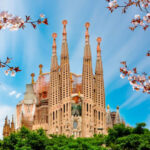 The Fascinating History of Sagrada Familia: A Marvelous Architectural Masterpiece
The Fascinating History of Sagrada Familia: A Marvelous Architectural Masterpiece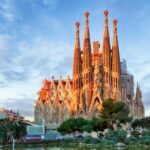 Sagrada Familia Facts: Unveiling the Enigmatic Masterpiece of Barcelona
Sagrada Familia Facts: Unveiling the Enigmatic Masterpiece of Barcelona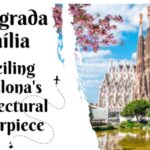 The Enchanting Saga of Sagrada Familia: Unveiling the Architectural Masterpiece
The Enchanting Saga of Sagrada Familia: Unveiling the Architectural Masterpiece Why Sagrada Familia Was Built: Unveiling the Secrets Behind Gaudí's Masterpiece
Why Sagrada Familia Was Built: Unveiling the Secrets Behind Gaudí's Masterpiece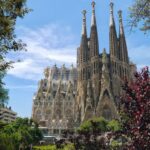 What is the Sagrada Familia in Barcelona: A Masterpiece of Architecture
What is the Sagrada Familia in Barcelona: A Masterpiece of ArchitectureIf you want to know other articles similar to The Sagrada Familia: A Comprehensive Explanation of Gaudí's Masterpiece you can visit the category WHERE YOU CAN GO.
Deja una respuesta

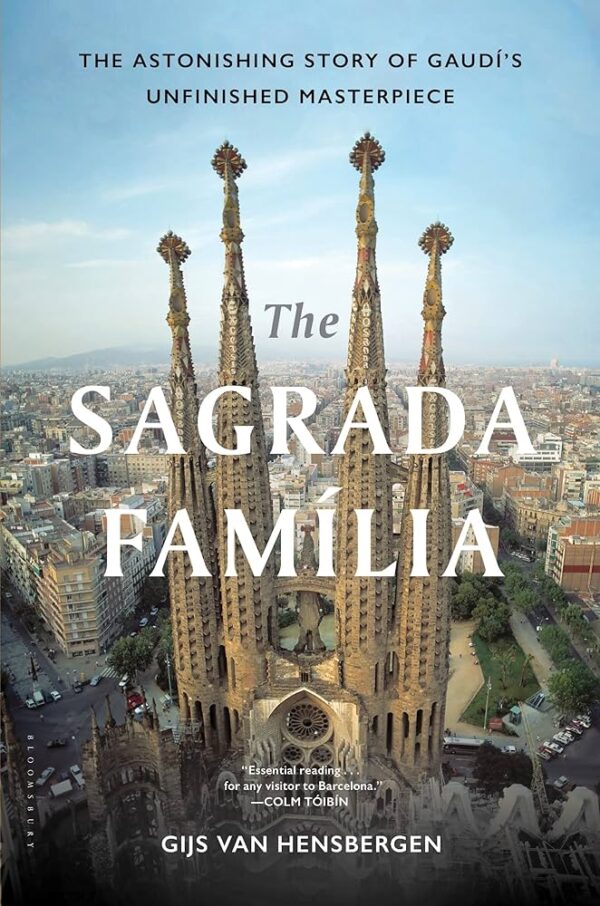








Read more!